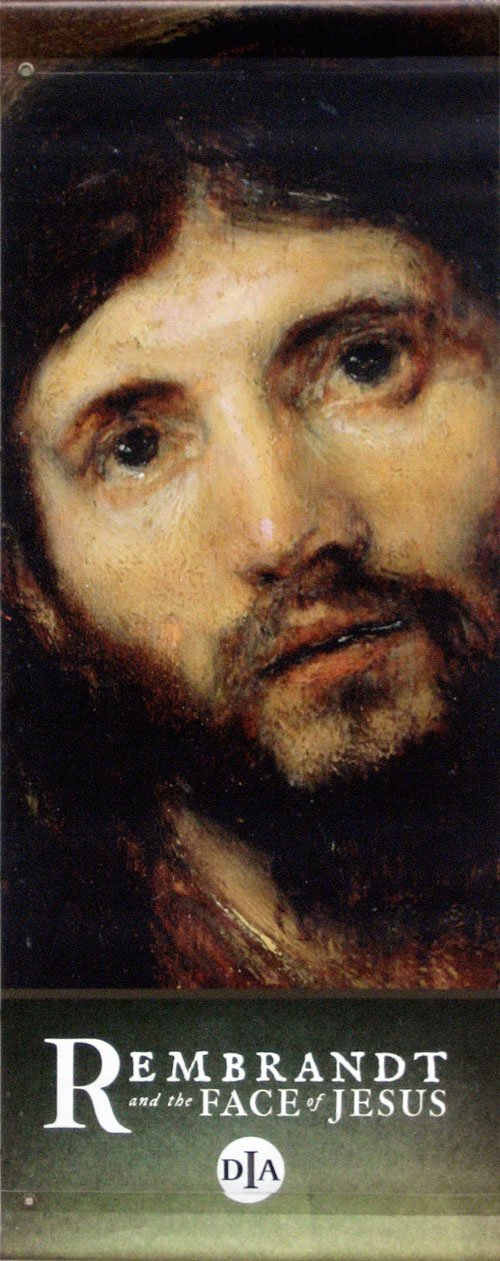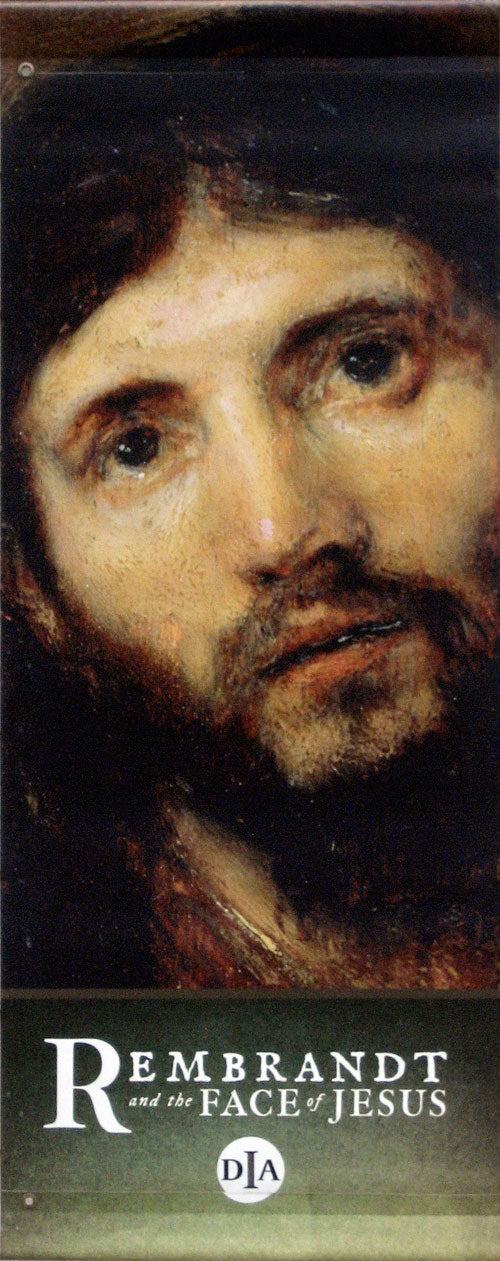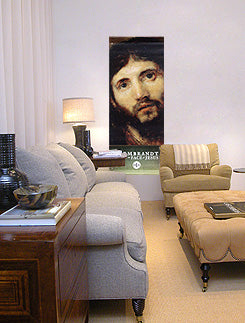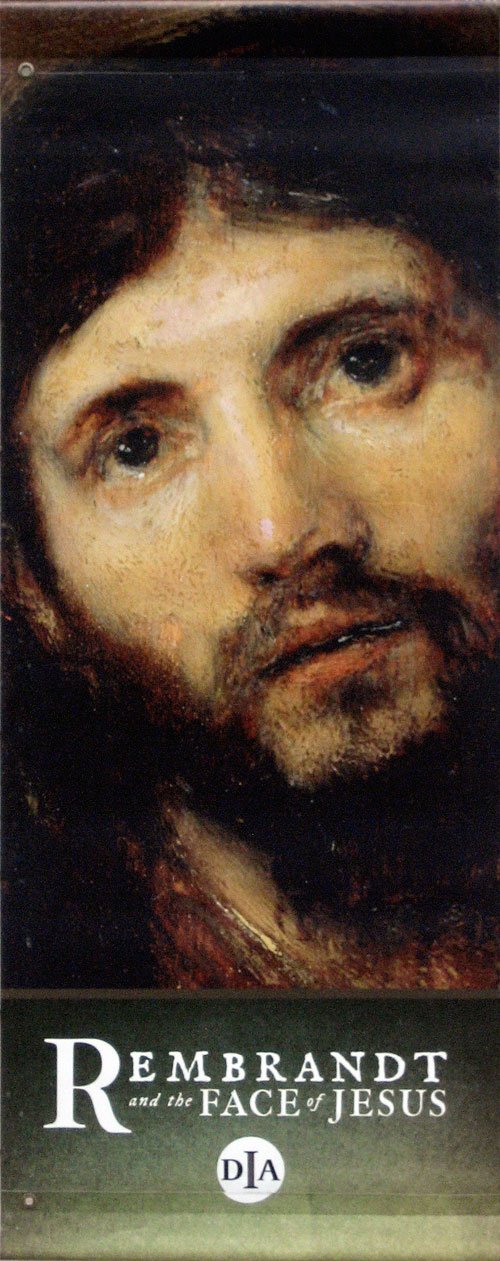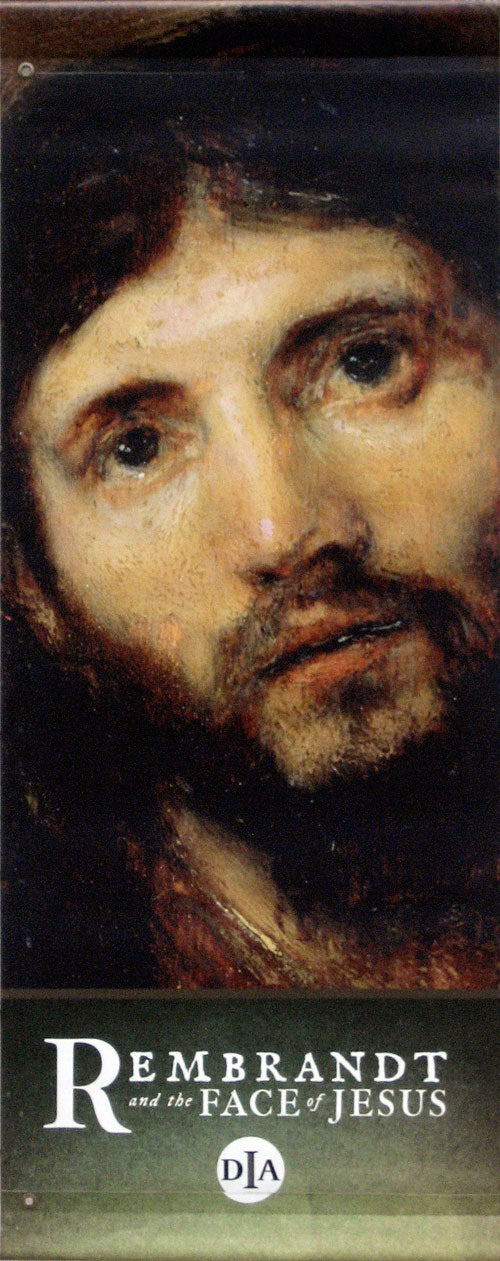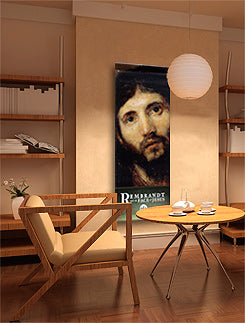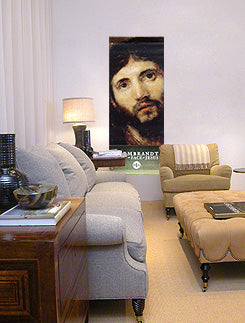Detroit Institute of Arts
Rembrandt and the Face of Jesus (short version)
Rembrandt and the Face of Jesus (short version)
Couldn't load pickup availability
Share
Limited Edition: 29
Exhibition: Rembrandt and the Face of Jesus
Material: Printed vinyl
Dimensions: 24" x 60" (60cm x 152cm)
Hanging Hardware Included
Summary
Extreme Makeover: Jesus Edition
Actually, this is not reality TV. In the 17th century, Rembrandt remade Jesus. Gone was the high forehead, the light brown hair with blonde highlights, and the golden aura, an image carried down through the ages with the help of the Mandylion of Edessa, a cloth thought to contain the likeness of Jesus. Rembrandt did not so much reject the Byzantine icon and the usual portrayal of heroics and suffering. Rather, as part of his long and thoughtful study of the life of Jesus, he reinvented Jesus as a more human, meditative man with long, dark brown hair parted in the center and tucked behind the ears. Jesus was vulnerable, humble, and Jewish. The exhibition, Rembrandt and the Face of Jesus, explored Rembrandt's paintings, drawings, and etchings of Jesus. Perhaps today it is these images that you think of when you visual Jesus, but in his time, Rembrandt was on the cutting edge.
Description
The exhibition, Rembrandt and the Face of Jesus, featured 64 works from Rembrandt’s studio organized to show the evolution of the Dutch artist’s renderings of Jesus. As a young man, Rembrandt, like others of the time, modeled Jesus after the Greek icon, a heroic yet suffering man often in dramatic scenes. But as his close study of the origin of Christianity continued, Rembrandt abandoned tradition. Among those exhibited, there were seven “Head of Christ” paintings. One painting, Head of Christ, done from life, captures the expression and light on skin of a model posing. Rembrandt believed strongly in working “from life” as paramount to the creation of art. These seven works were not all signed but they are attributed to Rembrandt as they were either his pupils or others who influenced his work.
Rembrandt was a Protestant, but he and his wife, Saskia, lived for a time in a large home in the Jewish quarter of Amsterdam. Though a subject of debate, some believe the artist used a young Sephardic Jew to sit as a model for his portraits of Jesus. It would be fitting for Rembrandt to return to a historical truth, to depict Jesus as the Jew he was.
Another one of the Head of Christ paintings appears on the front of the banner used to promote the exhibition. It is oil on an oak panel, circa 1648-1650 and measures approximately 23 by 21 inches. The painting is signed by the artist on the top left and is owned by the Detroit Institute of Arts. Below the image is a green gradated band with the title of the exhibition in white letters, along with DIA, the museum’s logo. Both sides of the banner are identical.
A longer version of this banner is available.
Provenance
This banner was displayed around the Detroit area between November 20, 2011 and February 12, 2012. The exhibition was organized by the Louvre, where it first opened (April 21 to July 18, 2011), the Philadelphia Museum of Art (August 3 to October 30, 2011) and the Detroit Institute of Arts.
